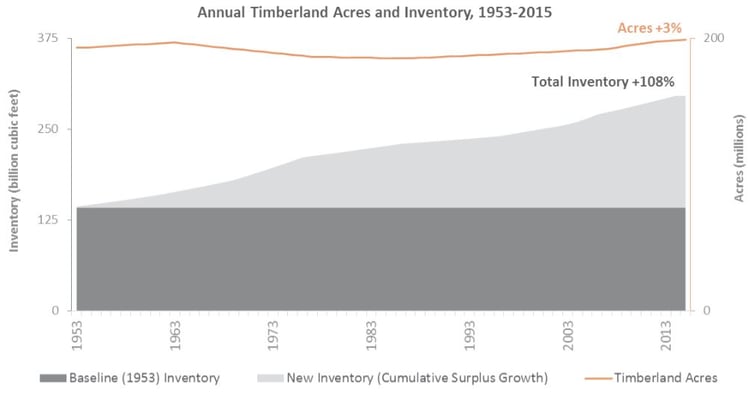
In a win for wood biomass and the continued growth of renewable energy across Europe, the European General Court recently dismissed a case brought by a group of individuals and NGOs who sought to remove biomass provisions contained in the EU’s 2018 Renewable Energy Directive.
Per coverage of the case via Renewables Now, “In March 2019, plaintiffs from Estonia, France, Ireland, Romania, Slovakia and the US initiated legal action with claims that the EU’s biomass policy would not only destroy forests, but also increase greenhouse gas emissions. They said they represent areas on both sides of the Atlantic, which saw their old-growth forests cleared and burned to fuel the EU industry.”
The EU Court, however, disagreed. It found that the litigants did not have standing and its final Order explains the Court’s position:
- "The applicants do not put forward any factor recognised by case-law which would be capable of distinguishing them individually as addressees. Furthermore, they themselves acknowledge that the protection and regulation of the environment is something which affects ‘everyone in both current and future generations’, a statement which is difficult to deny and which militates against the notion of individual concern."
- "Accordingly, even assuming that the contested directive does have a negative impact as regards forests and the operation of power plants, the applicants are not in a situation that is different from that of the indeterminate and indeterminable body of Union citizens, which prevents the contested directive from being of individual concern to them.”
Wood Biomass Trends & Statistics
Wood biomass, derived from the forest and manufactured by the forest products industry, is the EU’s largest single source of renewable energy and is a key technology for achieving near- and long-term climate objectives. It enables European power generators to repurpose existing coal-based infrastructure with a renewable alternative that reduces the carbon intensity of electricity generation by up to 85 percent on a life-cycle basis.
Last year, the US exported nearly 6 million metric tons of biomass to the EU, which is primarily grown and produced in in the US South. The region has been a major hub of America’s forest products industry since the early 20th century and is one of the largest and most sustainably-managed wood baskets in the world.
Contrary to the plaintiff’s contention in the above case, wood biomass is indeed a “green” energy alternative that is both abundant and renewable. Because of concerns about the growth of the wood pellet industry in the US South, Forest2Market was commissioned to examine the impact of the growing sector on forest inventories in the region.
The report, “Wood Supply Market Trends in the US South: 1995 – 2015,” reveals that industrial wood pellet exports represent a very small part of forest harvests in the US South and will continue to do so into the future.
- Total removal of wood in the US South for all markets is 3.3 percent of the total forest inventory.
- Pellet exports represent 0.08 percent of the total inventory.
- Future industrial demand for US pellets overseas represents 0.3 percent of total forest inventory in the US South.
- Realistic demand and market share outlooks show that US industrial exports of biomass pellets to Europe could eventually rise to 10.8 million metric tons.
- Annual removals to meet this demand would total 25 million tons, which represents 1.0 percent of pulpwood inventory and 0.3 percent of total forest inventory in the South.
Forest Industry Trends & Statistics
In a separate study, Forest2Market conducted a statistical analysis for a 70-year period of the forest acreage, demand and inventory, and we found counter intuitive and statistically significant correlations. The report, “Historical Perspective on the Relationship between Demand and Forest Productivity in the US South,” analyzes US Forest Service data and other scientific research to understand the relationship between changes in demand and supply from 1953 to 2015. Key findings of the report include:
- Rising demand for forest products increased removals from timberlands. Annual timber removals nearly doubled by 1996, and were 57 percent higher in 2015 than they were in 1953.
- The forest products industry and landowners responded by increasing the productivity of their forests. The result was a 112 percent increase in total annual timberland growth between 1953 and 2015.
- Increased demand has not depleted forests. The number of timberland acres has remained stable, increasing by 3 percent. At the same time, total inventory has doubled (+108 percent, from 142.1 to 296.1 billion cubic feet) because growth has outpaced removals.
- Urbanization, not increased demand for forest products, is the biggest threat to forests in the United States. Between 1982 and 2012, development was responsible for almost half (49.2 percent or 17.7 million acres) of all forestland that converted to other uses in the United States. By contrast, only 1.2 percent (0.5 million acres) of land that converted to forests during this period was previously developed.
- According to the US Department of Agriculture, wood volume in this region has increased by 21 percent since 2000, and southeastern landowners are currently growing 43 percent more wood than they remove every year.

While wood biomass isn’t the total solution to addressing climate change, it can be a bridge energy source and key portion of the solution by providing a zero-carbon addition alternative that can also be implemented at large base-load capacity. It’s a proven technology that exists in abundance, its supply chains are sustainable and stable, and its markets are entrenched. Kudos to the EU General Court for acknowledging and upholding the value and many benefits of wood biomass.





